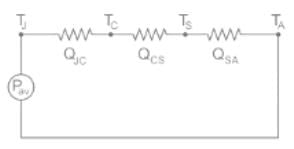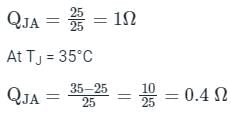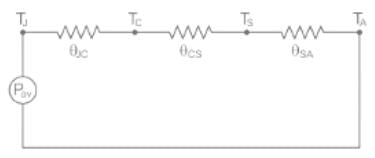Test: Heating, cooling and mounting of thyristors - Electrical Engineering (EE) MCQ
5 Questions MCQ Test - Test: Heating, cooling and mounting of thyristors
National Highways Authority of India (NHAI) has inked initial pacts with how many technical institutes to encourage them for voluntary adoption of highway stretches for research etc?
An SCR has ambient temperature of 25°C and Junction temperature of 50°C and Average power dissipated of 25 watt. If the junction temperature is reduced to 35°C, the percentage reduction in thermal resistance _______
The thermal resistance for the thyristor – sin k combination are QJC = 0.18 and ACS = 0.09 °C/W for a heat sin k temperature of 75°C and maximum junction temperature is 130°C . In case the heat sin k temperature is brought down 70°C by forced coaling find the percentage increase in the device rating.
For a thysistor maximum junction temperature is 200°C. The thermal resistance for the thyristor sink combination are θJC = 0.15 and θCS = 0.05∘c/w. Initially the heat sink temperature of 80° C and it is brought down to 70° C by force cooling, the percentage increase in the device rating is – (in%)
The usual way to accomplish higher gate current for improved di/dt rating is by using


 Here,
Here,








 x 100 = 4.08%
x 100 = 4.08%















